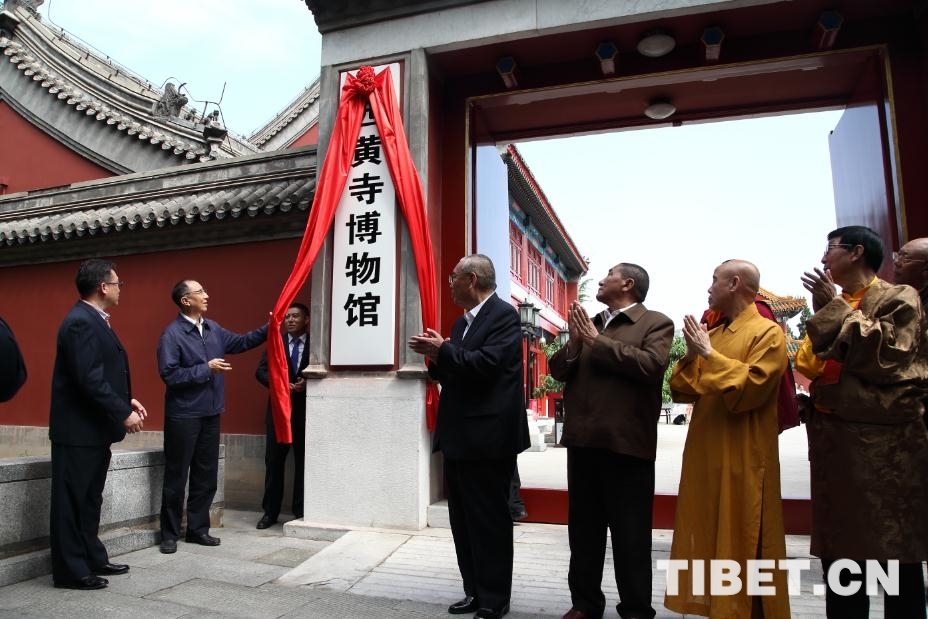May 18th was the 42nd International Museum Day, and on that morning, the only original Tibetan Buddhist Culture Museum in Beijing, the Xihuang Temple Museum, held an opening ceremony and officially opened to the public.

Ceremony to open the museum.
On the opening day, a thangka exhibition entitled "Sakyamuni, Tsongkhapa, and Panchen Lamas Thangka Exhibition" was unveiled, displaying five Sakyamuni thangkas, 15 thangkas on the life of Tsongkhapa, and 11 thangkas about successive Panchen Lamas. Besides, a total of 130 works of art on new material thangka, print, and dharma instrument were exhibited. Each piece is a Buddhist cultural relic with distinctive characteristics of the times they were made and unique regional styles, reflecting the essence and distinctiveness of Buddhist art. The exhibition shows the continuous innovation of thangka art from artistic techniques to materials used.
Xihuang Temple was built in the year 1651 and was a famous temple during the Qing Dynasty. The temple is composed of three courtyards and covers and area of more than 20,000 square meters. The tranquil mandala courtyard forms the main part of the complex. The museum contains Buddhist pagoda relics, dharma instruments, Buddha statues, thangka paintings, and sutra scrolls. The museum is carrying out permanent exhibitions on the sixth Panchen Lama and Xihuang Temple itself. Temporary exhibitions include a thangka exhibition and Buddhist ceramic art exhibition.
With the opening of the Xihuang Temple Museum and its continuous innovation and development to display Tibetan relics, it will begin to play an even bigger role in helping more people understand the historical relations between the local government of Tibet and the Central Government and their joint efforts to uphold historical facts of national and ethnic unity. This will also better promote the excellent traditions of Tibetan Buddhism and patriotism.
